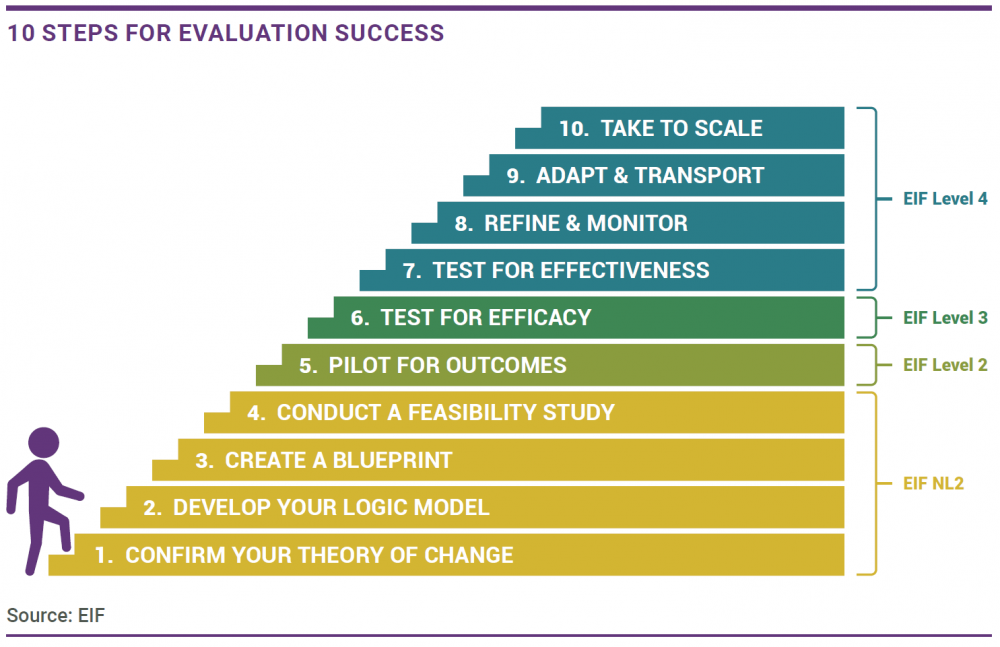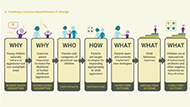Guide
10 steps for evaluation success
This guide sets out the 10 steps along the evaluation journey from a good idea into an intervention that ‘works’.
Along the way, it offers explainers, tips and links to additional how-to resources on all the stages of evaluation maturity, including theory of change and logic models, feasibility studies, pilot evaluations, impact assessments, and the quality assurance systems that are essential if interventions are going to remain effective when offered at scale.
We know that evaluation methods can be daunting, especially when they are unfamiliar or require technical expertise. It is therefore not surprising that those involved in the delivery of interventions often feel uncertain about how to evaluate them. This ‘10 steps’ framework, linked to our EIF evidence standards, has been developed with these concerns in mind.

While not all 10 of these steps are necessary or practical for every children’s service, we believe they are useful for making a good intervention even better, especially when followed in the order we set out here. These steps are also useful for more established interventions to reconfirm that their model is making a positive difference as it is implemented.
We believe that this guide is not only useful for those who develop interventions and services for children and their families, but also for those who commission and deliver these interventions on the ground.
- Steps 1 through 7 are particularly useful for understanding the potential of early intervention activities to improve meaningful child development outcomes and establishing their evidence base.
- Steps 8 through 10 then describe how evaluation methods can be used to ensure that activities with established evidence remain effective as they are delivered in diverse contexts and populations.

